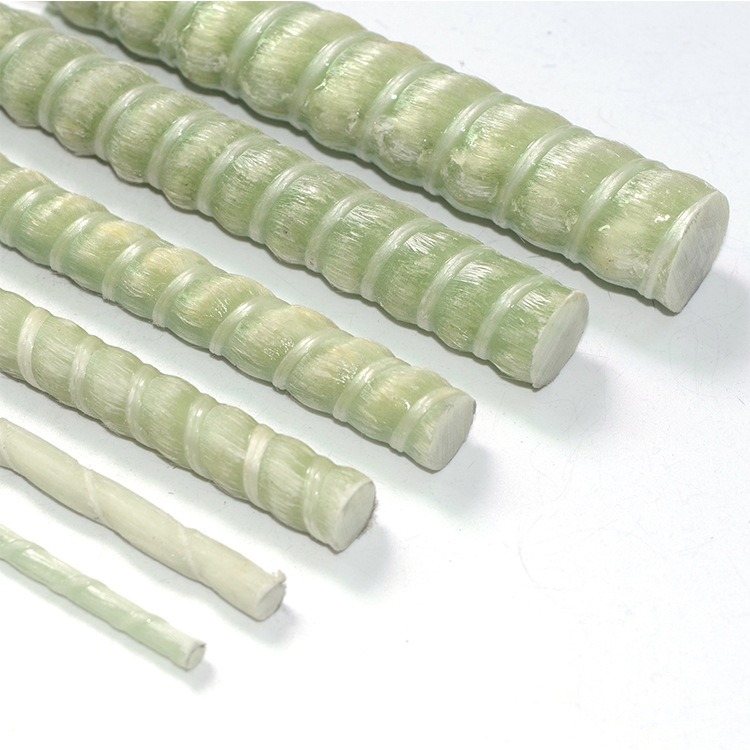Introduction
Fiberglass rebar has emerged as a revolutionary material in the construction industry, offering superior corrosion resistance and tensile strength compared to traditional steel rebar. As infrastructure demands evolve, understanding the proper techniques for tying fiberglass rebar is crucial for structural integrity and longevity. This article delves into the methods and tools used to tie fiberglass rebar effectively, ensuring optimal performance in various construction applications. Notably, Fiberglass Rebar is becoming increasingly popular due to its advantageous properties.
Understanding Fiberglass Rebar
Fiberglass rebar, also known as glass fiber reinforced polymer (GFRP) rebar, is a composite material made from a resin matrix reinforced with glass fibers. Unlike traditional steel rebar, fiberglass rebar is non-corrosive, lightweight, and exhibits high tensile strength. These characteristics make it an excellent choice for structures exposed to harsh environmental conditions, such as marine infrastructures, chemical plants, and areas with de-icing salts.
The non-metallic nature of fiberglass rebar eliminates the risk of rust and corrosion, which can compromise the integrity of concrete structures over time. Its electromagnetic neutrality also makes it suitable for use in facilities sensitive to magnetic fields, such as hospitals and laboratories. Understanding these properties is essential when considering the proper methods for tying and installing fiberglass rebar.
Materials Used for Tying Fiberglass Rebar
When it comes to tying fiberglass rebar, it's important to select materials that complement its properties. Here are some materials commonly used:
Plastic Zip Ties
Plastic zip ties are a popular choice due to their non-conductive and non-corrosive nature. They are easy to use and provide sufficient strength for holding rebar in place during concrete pours. However, their tensile strength is lower compared to metal ties, so they are best suited for applications where the rebar framework isn't subjected to high stresses before the concrete sets.
Fiberglass Tie Wire
Fiberglass tie wire is specifically designed to work with fiberglass rebar. Made from the same composite material, it ensures compatibility and maintains the non-corrosive benefits throughout the structure. This type of tie wire offers adequate strength and durability, making it ideal for most construction applications involving fiberglass rebar.
Stainless Steel Tie Wire
In situations where higher tensile strength is required, stainless steel tie wire can be used. Although it reintroduces a metallic component into the structure, stainless steel is highly corrosion-resistant. Care must be taken to ensure that the use of metal ties does not negate the benefits of using fiberglass rebar, especially in environments where avoiding metal corrosion is critical.
Techniques for Tying Fiberglass Rebar
Proper technique is essential when tying fiberglass rebar to maintain the structural design and ensure safety. Here are some standard practices:
Using Tie Guns
Manual or battery-powered tie guns can facilitate the tying process, especially on large projects. These tools can be used with plastic or fiberglass tie materials and ensure consistent tension and secure knots. They also increase efficiency and reduce the physical strain on workers.
Manual Tying Methods
For smaller projects or tight spots, manually tying the rebar using pliers or hook ties might be more practical. Workers should ensure that ties are snug but not overly tight to avoid damaging the fiberglass rebar, which can happen if excessive force is applied.
Spacing and Tie Patterns
The spacing of the ties and the pattern used can impact the structural performance. Standard practice involves tying at every intersection in high-stress areas and at every second or third intersection in lower stress zones. Consulting engineering specifications is recommended to determine the appropriate tying schedule for a specific project.
Best Practices and Considerations
When working with fiberglass rebar, there are several best practices to ensure optimal results:
Handling and Storage
Fiberglass rebar should be handled carefully to prevent damage to the bars. It should be stored flat and off the ground to avoid moisture accumulation and potential deformation. Protective gloves should be worn to prevent skin irritation from fiberglass fibers.
Cutting Techniques
Unlike steel rebar, fiberglass rebar cannot be bent but can be cut to length using appropriate tools such as diamond blade saws. Cutting should be done with care to prevent fraying, and the cut ends can be sealed with resin if necessary.
Consulting Manufacturer Guidelines
Different manufacturers may have specific recommendations for tying their fiberglass rebar products. It's essential to consult the manufacturer's guidelines to ensure compatibility of tie materials and adherence to recommended practices. Products from Fiberglass Rebar suppliers often come with detailed instructions.
Applications of Properly Tied Fiberglass Rebar
The advantages of fiberglass rebar are maximized when it is correctly tied and installed. Here are some applications where proper tying is critical:
Marine Structures
In marine environments, structures are constantly exposed to saltwater, which accelerates the corrosion of steel rebar. Fiberglass rebar offers a durable alternative, and proper tying ensures the integrity of docks, piers, and seawalls under dynamic load conditions.
Roadways and Bridges
De-icing salts used on roadways can lead to premature corrosion of steel reinforcements. Using fiberglass rebar with appropriate tying methods extends the lifespan of bridges and road surfaces by preventing corrosion-related deterioration.
Chemical Plants
Facilities handling corrosive chemicals benefit from fiberglass rebar's resistance to chemical attack. Secure tying methods ensure that the rebar maintains its position and structural role despite the challenging environment.
Case Studies and Expert Insights
Several projects have successfully implemented fiberglass rebar with appropriate tying techniques, highlighting its benefits:
Bridge Reconstruction in Coastal Areas
A coastal bridge reconstruction project utilized fiberglass rebar tied with fiberglass tie wire. The result was a structure with enhanced durability against saltwater corrosion, reducing long-term maintenance costs.
Parking Garage Durability Enhancement
An urban parking structure faced issues with corrosion due to de-icing salts. Retrofitting with fiberglass rebar tied using plastic zip ties extended the facility's life, demonstrating the practicality of non-metallic ties in such environments.
Expert Opinions
Construction engineers emphasize the importance of compatibility between the rebar and tie materials. According to Dr. Jane Smith, a structural engineering professor, "Choosing the right tying material for fiberglass rebar is essential. It ensures the composite action of the reinforcement without introducing weak points or potential corrosion sites."
Advantages Over Traditional Methods
Tying fiberglass rebar using compatible materials offers several advantages over traditional steel rebar tied with steel wire:
Corrosion Resistance
By using non-metallic ties, the entire reinforcement system remains non-corrosive, significantly extending the structure's service life in corrosive environments.
Lightweight Handling
Fiberglass rebar is lighter than steel, reducing transportation and installation costs. Using lightweight ties complements this benefit, making handling on-site easier and safer.
Enhanced Structural Performance
Proper tying ensures that the rebar maintains its designed position, leading to improved structural performance and load distribution within the concrete element.
Potential Challenges and Solutions
While there are numerous benefits, certain challenges can arise when tying fiberglass rebar:
Material Compatibility
Using inappropriate tie materials can compromise the rebar's performance. Solution: Always use ties recommended by the rebar manufacturer or those made from compatible materials like fiberglass or appropriate plastics.
Worker Familiarity
Construction crews may be less familiar with fiberglass rebar. Solution: Provide training sessions to educate workers on handling, cutting, and tying techniques specific to fiberglass rebar.
Cost Considerations
Initial costs for fiberglass rebar and specialized ties may be higher than traditional materials. Solution: Evaluate lifecycle costs, as the reduced maintenance and extended service life often offset the initial investment.
Conclusion
Tying fiberglass rebar correctly is a critical component in leveraging its full benefits in construction projects. Selecting the appropriate tie materials, employing proper techniques, and adhering to best practices ensure that structures achieve enhanced durability and performance. As the industry moves towards more sustainable and long-lasting materials, understanding the nuances of working with products like Fiberglass Rebar becomes increasingly important. By embracing these advanced materials and methods, engineers and builders can create infrastructures that stand the test of time while minimizing maintenance and replacement costs.




























